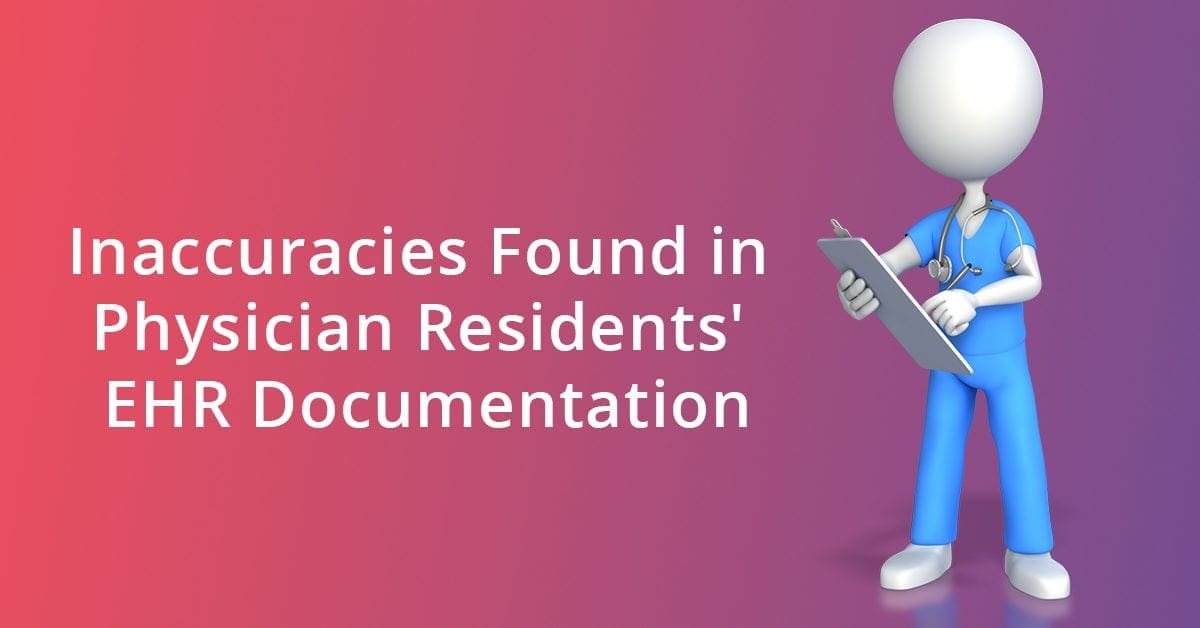Call us toll-free: 800-878-7828 — Monday - Friday — 8AM - 5PM EST

By Jeff Lagasse for Healthcare Finance
Emergency department residents do what all physicians do: They document patient encounters into an electronic health record. But the information they’re entering may not be all that accurate.
A study published in JAMA Network Open tasked 12 observers with following nine physician residents as they documented patient encounters into their EHRs. The observers included two physicians and 10 undergraduate students.
Over the course of 180 patient encounters spread out over two unnamed teaching hospitals, the observers focused both on the physical exam and on the review of systems — organs in the body — and recorded their findings.
The results showed significant disparities between what the observers witnessed and what residents entered into their EHRs. Residents documented a median of 14 systems that were reviewed with the patient, while observers noted a median of only five systems. The physical exam portion of the patient encounter also showed inconsistencies, with observers recording a median of 5.5 systems examined, and residents recording a median of eight.
WHAT’S THE IMPACT
The results raise the possibility that some documentation may not accurately reflect the actions undertaken by the physician. Whether this trend is widespread will likely need further study, but because of what the authors call institutional barriers, further research may be difficult. They suggest that payers should consider removing financial incentives to generate lengthy documentation.
THE LARGER TREND
Previous investigations have researched nurse documentation accuracy, compared the accuracy of paper with EHRs, and analyzed the accuracy of physician documentation of things such as diagnoses. What makes this study different, the authors said, is concurrent observation — shadowing the physician residents in real time.
Stakeholders have identified flaws in EHRs as a serious problem. For example, in a policy position paper from the American College of Physicians, the panel said, “The primary goal of electronic health record-generated documentation should be concise, history-rich notes that reflect the information gathered and are used to develop an impression, a diagnostic and/or treatment plan, and recommended follow-up.”
Because of that, the authors of the current research said payers should consider removing incentives to document lengthy reviews of systems and physical examinations — a change the Centers for Medicare and Medicaid Services may be moving toward incrementally, given recent announcements regarding physician payment documentation requirements for outpatient office visits that will take effect in 2021.
